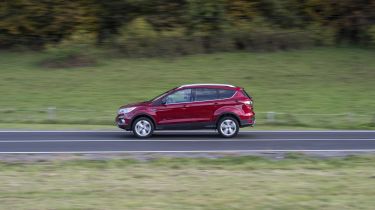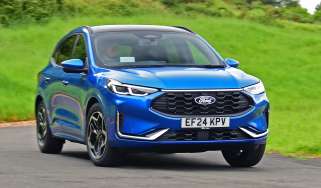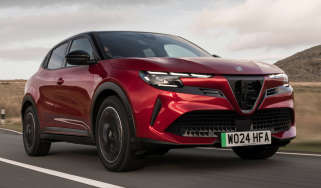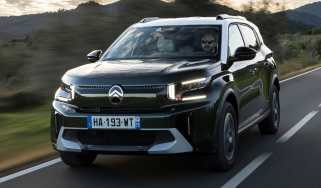Used Ford Kuga review: 2012 to 2019 (Mk2) - Engines, performance and drive
The Ford Kuga is pretty good to drive, but the Mk2 model is the least enjoyable of the three Kuga generations
The Ford Kuga made a name for itself when it first arrived as being a good-to-drive alternative to models such as the Nissan Qashqai. However, when this second-generation model arrived, it was clear some of the magic had disappeared and although the Mk2 Kuga is better to drive than a Kia Sportage or Toyota RAV4 of a similar age, many rivals outclassed it.
That all changed again with the launch of the Mk3 model that’s currently on sale as a new car, though, which is back to being one of the best cars in its class to drive. Still, the Mk2 model’s punchy engines mean that it’s still a good option, and it’s comfortable enough.
What is the Ford Kuga like to drive?
The Ford Kuga feels more grown-up than most of its rivals. Although the Kuga's suspension has been tweaked for comfort rather than outright agility, and its electric power steering is a little lacking in feedback, it's still one of the better cars to drive in its class, resisting lean in corners more than some conventional hatchbacks.
The Mazda CX-5 has better feel through the steering wheel means it’s better on twisty country roads, although the Kuga ST-Line is better as it has sports suspension and steering that’s recalibrated for greater feel.
More reviews
Car trim reviews
In-depth reviews
- Ford Kuga review – a sharp-handling and efficient SUV
- Ford Kuga Plug-in Hybrid SUV review
- Ford Kuga SUV (2008-2012) review
Used car reviews
The Kuga is neither as nimble as a SEAT Ateca nor as comfy as a Skoda Karoq, so there are options out there that are better in certain ways. The Kuga is still a decent all-rounder, though.
Which engine should I choose?
The entry-level 118bhp two-wheel-drive 1.5-litre EcoBoost petrol engine has a 0-62mph time of 12.6 seconds, which is fine around town but may be a little sluggish for those who spend a lot of time on the motorway. The 148bhp version is much better, getting the car from 0-62mph in 9.7 seconds when fitted with a manual gearbox.
The more powerful four-wheel-drive-only 178bhp petrol came with an automatic gearbox that increased running costs and blunted performance a bit. The automatic gearbox is also underwhelming, choosing the wrong gear at inopportune moments. The added grip of the four-wheel-drive system doesn't help performance either, with 0-62mph taking 11.4 seconds, so the top-of-the-range 4WD petrol is actually slower than the less powerful 2WD model.
The 148bhp 2.0-litre diesel model is available with two-wheel drive and four-wheel drive. It’s a quiet cruiser at the legal limit and can manage 0-62mph in 10.1 seconds. This engine is punchy, with plenty of power for easy overtaking and confident towing.
The 1.5-litre 118bhp diesel model accelerates from 0-62mph in 12.7 seconds, which means it feels a bit slow, but it’s economical.
Like the petrol engines, the top-of-the-range diesel comes with four-wheel drive only, but gets from 0-62mph in 9.2 seconds in manual form. Both diesels can be specified with Ford's Powershift dual-clutch automatic gearbox, but it's too hesitant when shifting manually and slightly slower with a 0-62mph time of 10.0 seconds.
















